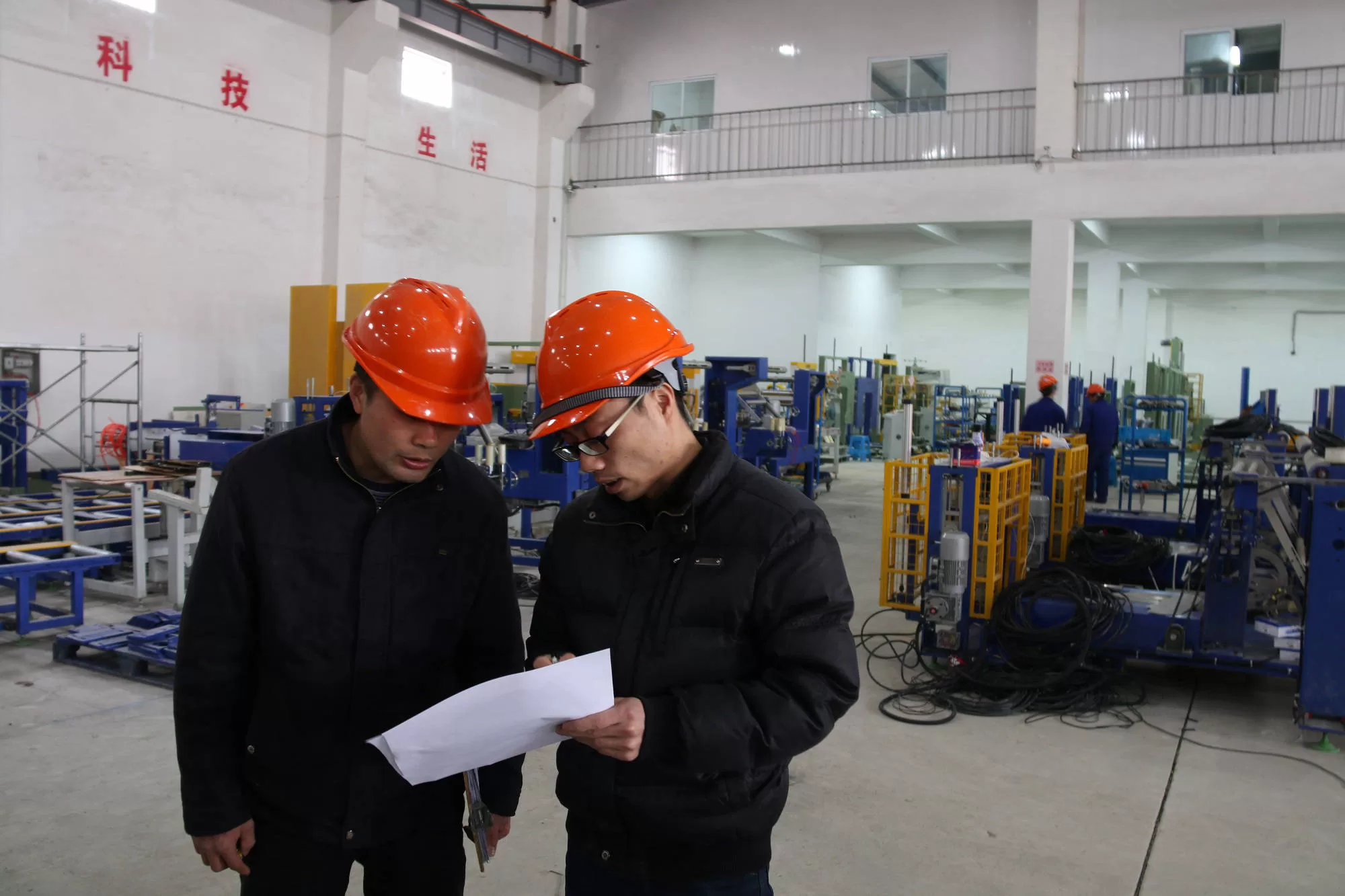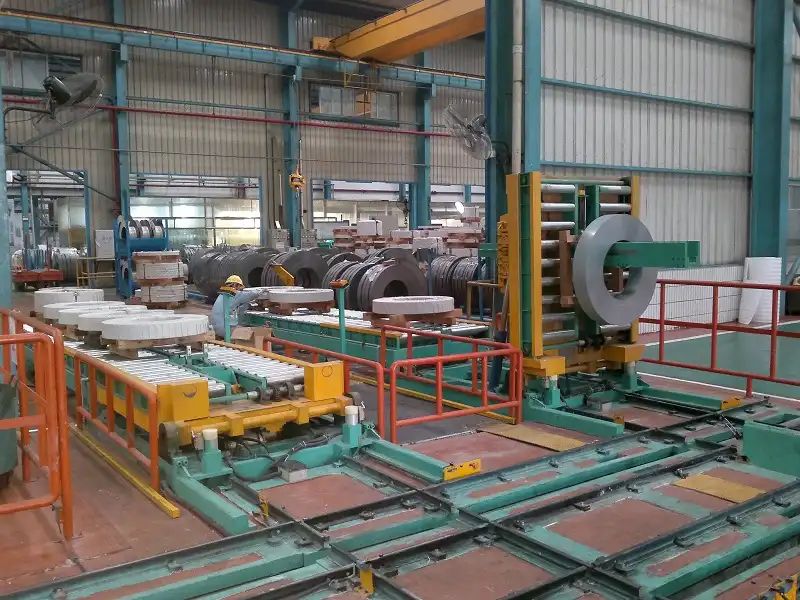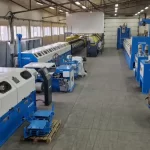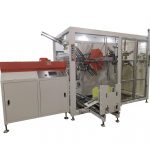Calculating ROI: The Long-Term Savings of Investing in an Automated Steel Coil Packing Line
- Calculating ROI: The Long-Term Savings of Investing in an Automated Steel Coil Packing Line
- 1. Understanding ROI in Manufacturing Investments
- 2. The Initial Cost of an Automated Steel Coil Packing Line
- 3. Reducing Labor Costs with Automation
- 4. Minimizing Downtime and Maximizing Uptime
- 5. Improving Product Quality and Reducing Damage
- 6. Material Savings and Waste Reduction
- 7. Enhanced Workplace Safety
- 8. Long-Term Durability and Equipment Lifespan
- 9. Energy Efficiency and Environmental Impact
- 10. Data-Driven Decision Making
- 11. Future-Proofing Your Operation
- 12. Real-World Case Studies: Proven ROI from Automation
- Conclusion

In the fast-paced world of steel manufacturing, efficiency, cost savings, and long-term value are critical to staying competitive. One area where significant improvements can be made is the steel coil packing process. As steel manufacturers look for ways to reduce operational costs, increase throughput, and maintain product integrity, many are turning to automated steel coil packing lines to achieve these goals. However, like any major capital investment, the question arises: What is the return on investment (ROI)?
In this article, we’ll break down the key factors involved in calculating ROI for an automated steel coil packing line, examining not only the immediate benefits but also the long-term savings and value this investment can deliver. By understanding the financial and operational impacts, manufacturers can make informed decisions that lead to greater profitability.
1. Understanding ROI in Manufacturing Investments
Return on investment (ROI) is a critical metric that helps manufacturers evaluate the profitability of an investment. In simple terms, it’s a measure of the net profit generated from an investment relative to the cost of that investment. For a steel coil packing line, ROI can be calculated by assessing both short-term cost reductions and long-term operational gains that result from automation.
Basic ROI Formula:
However, the ROI of an automated steel coil packing line involves more than just immediate savings. It’s essential to account for a variety of factors, including increased efficiency, reduced labor costs, lower material waste, and improved safety—all of which contribute to long-term profitability.
2. The Initial Cost of an Automated Steel Coil Packing Line
To understand the long-term savings, it’s important to first look at the initial investment. A fully automated steel coil packing line typically includes several components, such as turnstiles, coil down-enders, automated strapping machines, and wrapping machines. The cost of these systems can vary based on capacity, custom features, and technological sophistication.
Key Factors Contributing to Initial Costs:
- Equipment Costs: This includes the actual purchase of the automated machines, such as the wrapping system, strapping machine, and conveyor belts.
- Installation and Calibration: Professional installation and calibration ensure the system runs efficiently from the start. This is an upfront cost that will quickly be offset by operational savings.
- Training for Operators: Although automated systems require less human intervention, employees will still need training to manage and monitor the system. Training is a one-time cost but is crucial for optimizing the packing line’s performance.
While these initial expenses may seem significant, they are quickly outweighed by the long-term benefits and savings delivered by automation.
3. Reducing Labor Costs with Automation
One of the most immediate and significant advantages of an automated steel coil packing line is the reduction in labor costs. In a manual packing line, multiple workers are required to handle tasks such as wrapping, strapping, and moving steel coils. These tasks are labor-intensive and often repetitive, leading to inefficiencies, higher labor costs, and the risk of human error.
How Automation Reduces Labor Dependency:
- Fewer Operators Required: Automated systems can be operated by fewer workers, often just one or two operators who monitor the system and ensure everything runs smoothly. This can lead to significant savings in labor costs over time.
- Increased Efficiency: Automation increases the speed of the packing process, allowing fewer workers to handle larger volumes of production. For example, a fully automated packing line can complete the wrapping and strapping of multiple coils in the time it would take a team of workers to pack a single coil manually.
Real-world Example: A steel manufacturer in North America reduced its labor force in the packing department by 40% after installing an automated packing line, leading to annual labor cost savings of approximately $300,000.
4. Minimizing Downtime and Maximizing Uptime
Downtime in a manufacturing environment can lead to significant losses. With manual packing lines, downtime is often caused by human error, equipment failure, or the need for frequent breaks. In contrast, automated packing lines are designed to operate continuously with minimal disruption, significantly reducing unplanned downtime.
Benefits of Reduced Downtime:
- Continuous Operation: Automated systems can run 24/7 without the need for breaks, which is a major advantage for high-volume manufacturers. This ensures that production and packing processes can keep up with demand without bottlenecks or interruptions.
- Predictive Maintenance: Modern automated packing systems are equipped with predictive maintenance tools that use IoT sensors and data analytics to monitor the condition of the equipment. These systems can alert operators when maintenance is required, preventing unexpected breakdowns and reducing downtime.
By minimizing downtime, an automated system can increase overall productivity, leading to greater throughput and more revenue generation.

Get Your Best Solution !
5. Improving Product Quality and Reducing Damage
Manual steel coil packing is prone to human error, which can result in improperly wrapped or strapped coils. Poorly packed coils are more likely to shift during transportation, leading to damage, customer complaints, and returns. An automated steel coil packing line eliminates this risk by ensuring consistent wrapping and strapping quality for every coil.
How Automation Improves Quality:
- Precision Wrapping and Strapping: Automated systems apply the correct amount of tension and material during the wrapping and strapping process, ensuring that each coil is packed securely and uniformly.
- Customizable Settings: These systems allow manufacturers to program specific settings based on the size, weight, and material of the coil, ensuring optimal packaging for each product type. This reduces the likelihood of coils being damaged during handling or transportation.
Real-world Data: A European steel company reduced product damage claims by 25% within the first year of installing an automated packing line, saving over €100,000 in replacement costs.
6. Material Savings and Waste Reduction
Another often-overlooked advantage of automation is the reduction in material waste. Manual packing processes frequently result in the overuse or underuse of packing materials, which can lead to increased costs and inadequate protection for the product. Automated systems are designed to use the exact amount of wrapping film, strapping, and other materials required, minimizing waste.
How Automation Optimizes Material Usage:
- Precise Application: Automated wrapping machines use sensors to measure the exact dimensions of the steel coil and apply the appropriate amount of wrapping material. This not only ensures product safety but also reduces excess material usage.
- Less Rework: With manual packing, improper wrapping or strapping often leads to rework, which consumes additional materials and time. Automation reduces the need for rework by ensuring that every coil is packed correctly the first time.
Material savings can have a substantial impact on the total cost of ownership (TCO) for the packing line, further enhancing the long-term ROI.
7. Enhanced Workplace Safety
Workplace injuries are a major concern in any industrial setting, especially in industries that handle heavy materials like steel coils. Manual packing lines expose workers to risks such as back strain, repetitive motion injuries, and accidents related to the handling of heavy equipment. An automated steel coil packing line significantly improves workplace safety by reducing the need for manual handling of coils.
Safety Benefits of Automation:
- Reduced Manual Handling: Automated systems take over the heavy lifting, wrapping, and strapping of coils, reducing the risk of injury to workers.
- Built-in Safety Features: Many automated packing lines come with safety features such as emergency stop buttons, sensors, and light curtains that prevent the system from operating if a worker is in a dangerous position.
By minimizing the risk of workplace injuries, manufacturers can reduce costs related to workers’ compensation, insurance premiums, and lost productivity due to injury-related absenteeism.

8. Long-Term Durability and Equipment Lifespan
One of the key factors to consider when calculating the ROI of an automated steel coil packing line is the durability of the equipment. While the initial investment may be higher than a manual system, the long-term durability and reliability of automated machines lead to lower maintenance costs and a longer lifespan.
How Automation Increases Equipment Lifespan:
- High-Quality Components: Automated packing lines are built with industrial-grade components designed to withstand heavy usage and demanding conditions. These machines require less frequent maintenance compared to manual systems, which are more prone to wear and tear.
- Proactive Maintenance Schedules: Automated systems often come with predictive maintenance features that allow for regular upkeep and timely repairs, further extending the life of the equipment.
Investing in high-quality, durable machinery ensures that manufacturers get more years of use out of their packing line, improving the long-term ROI.
9. Energy Efficiency and Environmental Impact
In today’s world, sustainability is a growing concern for manufacturers, and one of the benefits of investing in an automated steel coil packing line is its potential for energy efficiency. Modern automated systems are designed to operate with less energy, leading to reduced operational costs and a smaller environmental footprint.
Key Ways Automation Improves Energy Efficiency:
- Optimized Power Consumption: Automated packing lines use energy-efficient motors and systems that are optimized to reduce power usage during low-load conditions. This means that even though the system may be running continuously, it consumes less energy compared to a manually operated line.
- Energy Monitoring Systems: Many modern systems come equipped with energy monitoring tools that allow operators to track the machine’s energy usage in real time. This data can be analyzed to identify opportunities for further energy savings, such as adjusting machine settings during periods of lower demand.
- Reduced Carbon Footprint: With more efficient use of resources and energy, automated systems help manufacturers lower their carbon emissions. Companies that implement energy-saving technologies can also take advantage of government incentives or carbon credits, which further improves the financial ROI.
Real-world Example: A steel manufacturer in China implemented an automated packing line and saw a 15% reduction in energy consumption over the first year, leading to cost savings of approximately $50,000.
10. Data-Driven Decision Making
One of the most forward-looking aspects of automated steel coil packing lines is the ability to leverage real-time data to drive decision-making. Industry 4.0 technologies, such as Internet of Things (IoT) sensors and machine learning algorithms, have made it possible for manufacturers to monitor every aspect of their packing lines. The ability to analyze this data not only improves day-to-day operations but also provides valuable insights that can lead to long-term improvements and cost savings.
Key Benefits of Data Integration:
- Real-Time Monitoring: By using data from IoT sensors, manufacturers can monitor the status of each component in the packing line, from strapping tension to wrapping speed. Any deviations from optimal performance can be addressed immediately, ensuring consistent quality and minimizing the risk of damage or downtime.
- Predictive Analytics: By analyzing historical data, machine learning algorithms can predict when parts of the system may need maintenance or replacement, preventing unexpected breakdowns. This proactive approach helps reduce downtime and maintenance costs.
- Optimization Opportunities: Data analytics allows manufacturers to continually optimize their packing processes. For example, by analyzing material usage data, companies can adjust settings to minimize waste while still maintaining the integrity of the packaging. Over time, these incremental improvements can lead to significant cost savings.
Real-world Data: A U.S.-based steel producer integrated IoT-enabled automated packing lines and reported a 25% reduction in maintenance costs due to predictive analytics, which alerted operators to potential equipment failures before they occurred.
11. Future-Proofing Your Operation
One of the most compelling reasons to invest in an automated steel coil packing line is the ability to future-proof your operation. As the manufacturing industry continues to evolve, automation and digitalization will become even more critical to maintaining a competitive edge.
How Automation Future-Proofs Your Business:
- Scalability: Automated packing lines are modular and scalable, meaning that they can grow alongside your business. If your production volume increases, you can easily expand your packing line by adding additional conveyor systems, strapping machines, or wrapping stations.
- Adapting to New Technologies: Automated systems are designed to integrate with emerging technologies. For example, AI-driven automation and blockchain integration are becoming more prevalent in manufacturing, and having an automated packing line will allow you to adopt these innovations more easily as they become mainstream.
- Compliance with Future Regulations: Governments around the world are increasingly implementing environmental and safety regulations that impact the manufacturing sector. By investing in an automated system that optimizes energy use, reduces material waste, and minimizes workplace injuries, your business will be better positioned to comply with these regulations.
- Sustainability Initiatives: As consumers and industries prioritize sustainability, companies that use eco-friendly practices will gain a competitive advantage. Automated packing lines contribute to sustainability by reducing waste, optimizing energy consumption, and ensuring product protection, which can help reduce the carbon footprint of steel transportation.
Future Trends: As we move into a more automated and digitalized manufacturing environment, smart factories equipped with AI, IoT, and machine learning will dominate the industry. Companies that invest in automated systems today will be better equipped to adopt these technologies in the future.
12. Real-World Case Studies: Proven ROI from Automation
Case Study 1: European Steel Coil Producer
A large steel manufacturer in Europe made the switch to a fully automated steel coil packing line to address labor shortages and improve packing consistency. After one year of operation, the company saw the following results:
- 20% increase in production capacity due to the reduction in downtime and faster packing speeds.
- 30% reduction in labor costs, as the automated system required only two operators compared to a previous team of six workers.
- A 10% improvement in material efficiency, as the automated system used the optimal amount of packing materials for each coil, reducing waste.
Case Study 2: North American Steel Exporter
A North American steel exporter experienced frequent damage claims due to inconsistent packing. After investing in an automated steel coil packing line, the company reduced product damage by 25%, leading to fewer customer complaints and fewer replacement orders. Additionally, the company saw a 15% reduction in shipping costs, as the automated system produced consistently compact packages that required less space during transportation.
Both of these examples illustrate how automated systems can deliver significant ROI by improving efficiency, reducing costs, and enhancing product quality.
Conclusion
Investing in an automated steel coil packing line offers a range of benefits that go far beyond immediate cost savings. From reducing labor costs and minimizing downtime to improving product quality and enhancing workplace safety, automation provides a solid foundation for long-term profitability. Additionally, the ability to leverage real-time data, optimize material usage, and increase energy efficiency positions companies to not only realize immediate returns but also prepare for future industry trends and challenges.
The long-term savings from automation, combined with the scalability and flexibility of modern systems, make this investment one of the smartest decisions steel manufacturers can make in today’s competitive landscape. By understanding the full scope of ROI, manufacturers can ensure that their automated packing lines deliver maximum value and future-proof their operations for years to come.

Get Your Best Solution !









